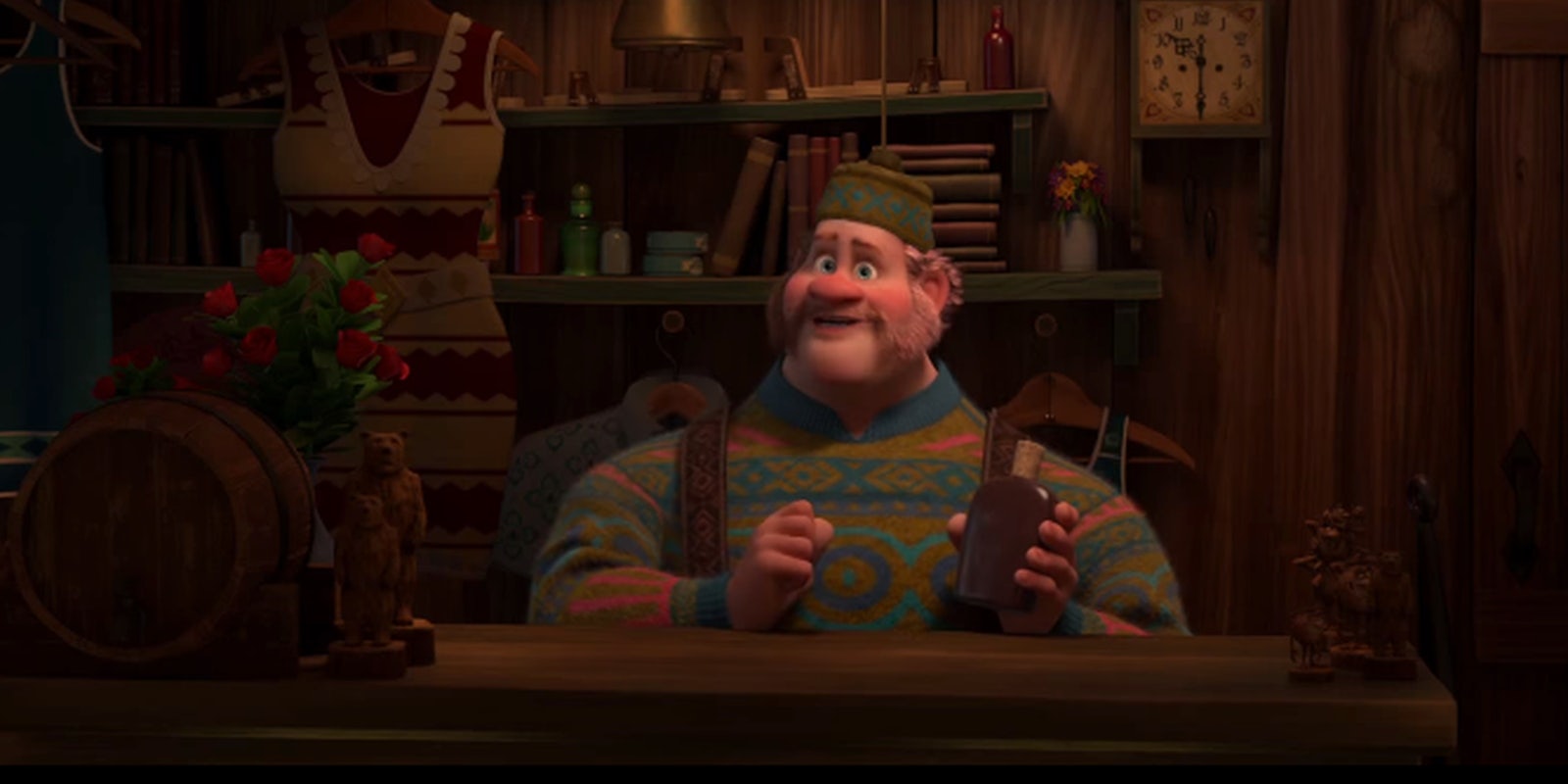Disney’s wholeheartedly embraced the “gay agenda,” haven’t you heard?
A Mormon grandmother has whipped the blogosphere into a frenzy with her denouncement of new Disney musical Frozen as homosexual propaganda corrupting our youth, whilst on the other side of the aisle queer Disney fans are praising the animated movie as a triumph for gay representation in cinema.
Except, either way, this really isn’t the case.
Self-described “well-behaved Mormon woman” Kathryn Skaggs argues that the film’s message of tolerance, exemplified by the Oscar-nominated song “Let It Go”, is designed to advance “the homosexual agenda” (it’s worth noting other Mormons have spoken out strongly against Skaggs’ claims).
Meanwhile Tumblr user fandomsandfeminism, in a post that has garnered more than 10,000 notes, takes that same basic premise in the opposite direction: That Queen Elsa’s story arch, utterly devoid of love interests, is one transitioning from repression and self-loathing all the way to “self-acceptance… and self-celebration” () – the same path that LGBTQ youths walk every day. She’s clear this is an interpretation rather than canonical, but nonetheless for for her reading Elsa’s struggle “as a queer struggle… adds a level of depth to an already lovely film”. Meanwhile, Gina Luttrell on PolicyMic praises Frozen as “the most progressive Disney movie ever.”
It’s time for a reality check. I don’t wish to dismiss anyone’s interpretation, or tell someone they’re watching a film “the wrong way” – but for me at least, these claims just don’t add up.
Let me tell you how many “gay” scenes there are in Frozen: One. And even that is up for debate. A shopkeeper waves to his family (“Yoohoo family!”) in a sauna, at which point a group of children—and a man, shock horror—wave back. They’re on screen for less than a second. The unidentified man isn’t even necessarily his partner, and is never identified as such; he could just as easily be a brother, or cousin, or son, or even just a random customer. That’s it.
Jump to 1:41 to see Oaken’s husband (maybe). Blink and you’ll miss it.
The rest of the LGBTQ narrative comes from Queen Elsa’s story arc. Afflicted by a seemingly uncontrollable ice curse, over the course of the film she comes to accept herself for who she is.
In “Let It Go” she gloriously sings:
“I don’t care
what they’re going to say
Let the storm rage on.
The cold never bothered me anyway”
Yes, of course this can be interpreted as a metaphor for the trial of “coming out”, and if people can identify with Elsa and are able to draw strength from this interpretation, then that’s fantastic.
But as a queer metaphor, it’s honestly a pretty weak one.
It could equally well be interpreted as preaching a message of self-acceptance to disabled people, or to persecuted racial minorities, or those suffering silently from mental health issues, or—well, just about anyone.
If anything, it’s more telling about Disney’s stance, and how naturally conservative the studio is. Despite its historically terrible representation of women, it nonetheless holds a special place in the hearts of millions. As such, it’s understandable that those who grew up loving Disney films, despite not fitting into Disney’s rigid white-beautiful-slim-elegant-ablebodied-cisgender view of the world, are leaping at the chance to claim a Disney film for their own. And yes, it is a (timid) step in the right direction. But we need to keep a hold of some perspective.
It’s one flamboyant shopkeeper and a song of acceptance sung by a princess who still rigidly sticks to society’s narrowly-defined standards of beauty: it’s hardly the transcendent gay anthem of our times.
But if this desire to claim Queen Elsa as a queer icon shows anything, it’s that Disney doesn’t need to be so worried about alienating anyone through progress. For every nutjob sending death threats to 5-year olds because they act alongside gay characters (yes, really), there’s a thousand people clamoring for more representative role models.
Just look at the pre-release Frozen fanart depicting Elsa as a woman of color, or the fact that there’s a burgeoning fandom for Moana, set to star a Polynesian princess, a full four years ahead of its release.
Disney’s proven itself capable of presenting a braver view of the world in its non-movie franchises: “Gay Days” have taken place at its Disneyland parks since the 1990s, and gay couples feature in two of its TV shows, Good Luck Charlie and The Fosters. Praising the film studio for the meager animated scraps they’re currently throwing to the LGBTQ community will only breed complacency on their part; it’s about time they “let it go” and come out the celluloid closet for good.
And as for those who view Frozen‘s message as something negative: If telling children they should be themselves is controversial, I’m not sure I want to live on this planet any more.
READ MORE:
- Here are all of the Disney+ titles available to stream at launch
- How to sign up for the Disney+ bundle
- Every Marvel Cinematic Universe movie and show missing from Disney+ (and when they’ll show up)
- Here’s everything we know about Disney+ so far
- The best movies and TV shows streaming on Disney+
Screengrab via disneyanimation/YouTube


